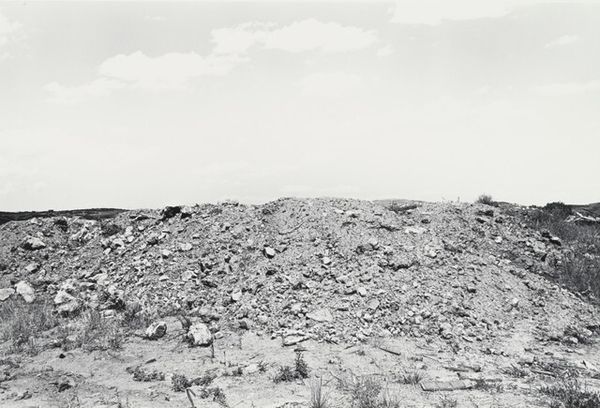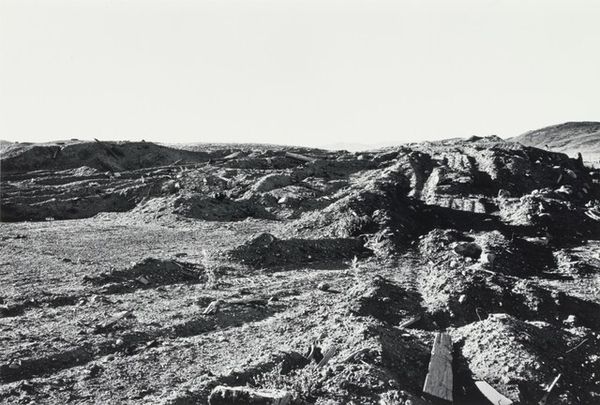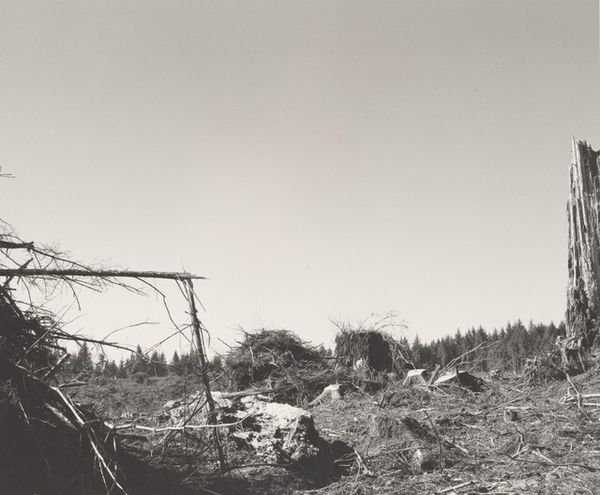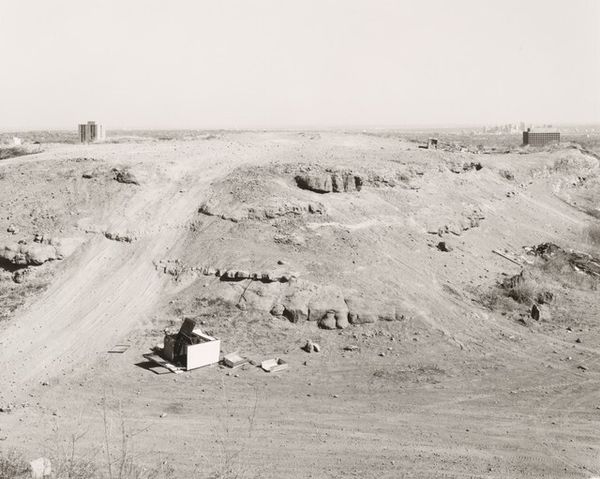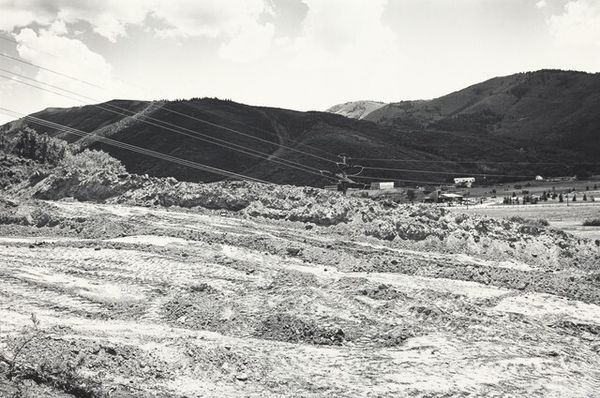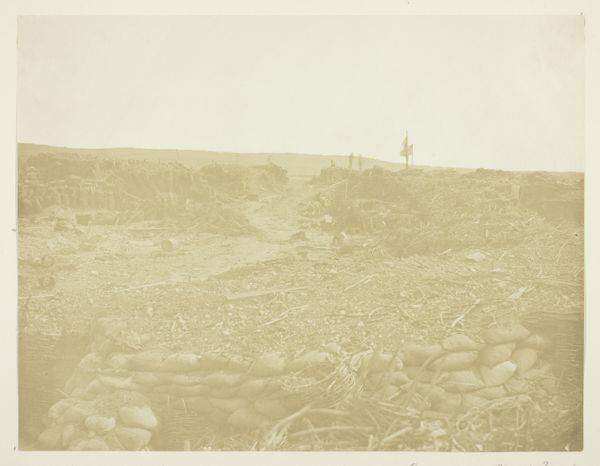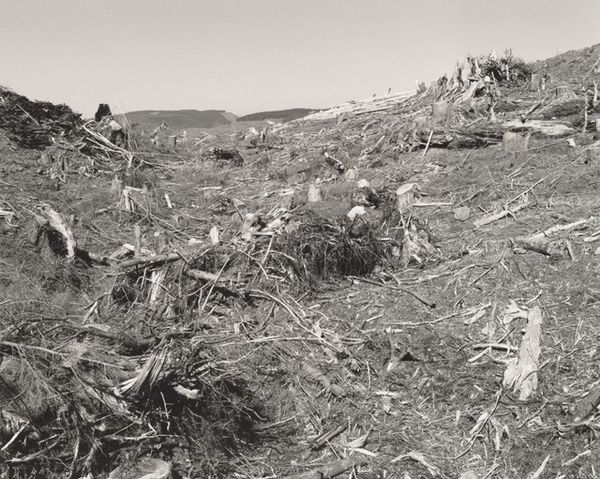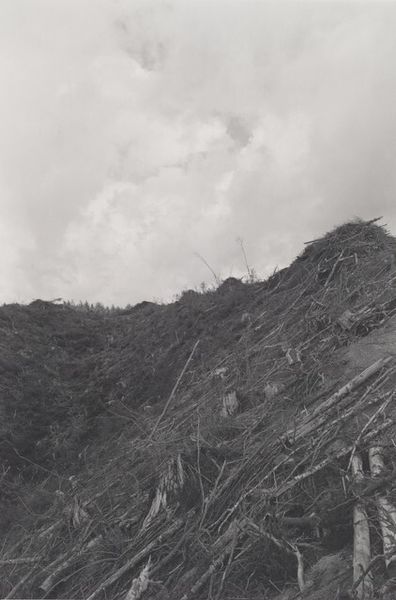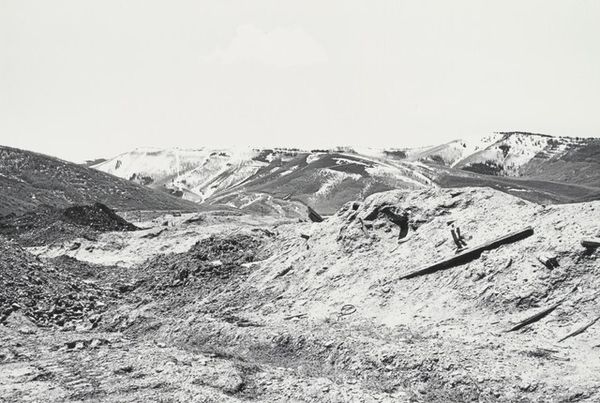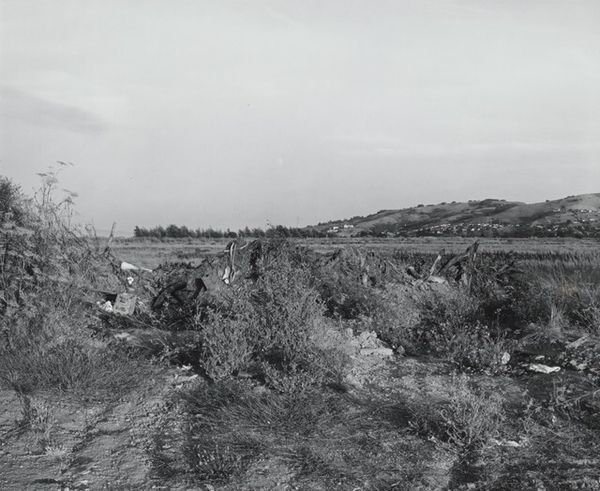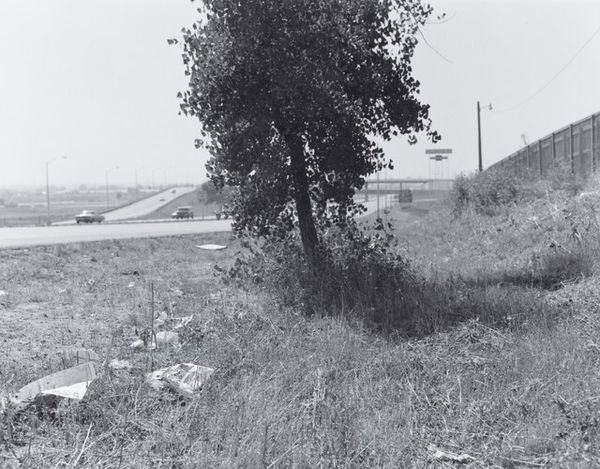
Between West Sidewinder Drive and State Highway 248, Looking North 1979
0:00
0:00
photography
#
photorealism
#
conceptual-art
#
black and white photography
#
minimalism
#
landscape
#
photography
#
black and white
#
monochrome photography
#
monochrome
#
monochrome
Dimensions: image: 16.51 × 24.13 cm (6 1/2 × 9 1/2 in.) sheet: 20.32 × 25.4 cm (8 × 10 in.)
Copyright: National Gallery of Art: CC0 1.0
Editor: Here we have Lewis Baltz’s black and white photograph, "Between West Sidewinder Drive and State Highway 248, Looking North" from 1979. The seemingly desolate landscape with its muted tones feels strangely compelling, yet somewhat unsettling. How do you interpret the socio-political undertones of this piece? Curator: Well, this image belongs to Baltz's series exploring the transformed landscape of the American West under the pressures of development in the late 70s. He critiques this expansion and questions the idealized myth of the West. Does it appear to you that he’s simply documenting, or something more? Editor: I see documentation, but with a detached perspective. The lack of traditional beauty is striking. Is that a purposeful choice to highlight a specific point? Curator: Absolutely. Baltz avoids romanticizing the West, and by choosing seemingly mundane subjects, he exposes the visual and social consequences of land use policies. The high contrast black and white further accentuates the harsh realities often overlooked. These "anti-pictures," as some called them, force viewers to confront what progress truly looks like. Editor: So, the work pushes back against typical landscape photography conventions, serving a critique of societal priorities through its austere aesthetic? Curator: Precisely. Baltz employs minimalism and photorealism not for their inherent beauty but as a critical tool to uncover the disjunction between promise and reality in these spaces. He also challenges traditional notions of authorship and objectivity within documentary practices. Editor: It's fascinating how a seemingly simple image can hold such a complex and layered critique. I now understand Baltz's purpose was to expose these socio-political issues through his unique approach. Curator: And that exposure fosters an important conversation about land use and environmental responsibility even today.
Comments
No comments
Be the first to comment and join the conversation on the ultimate creative platform.
